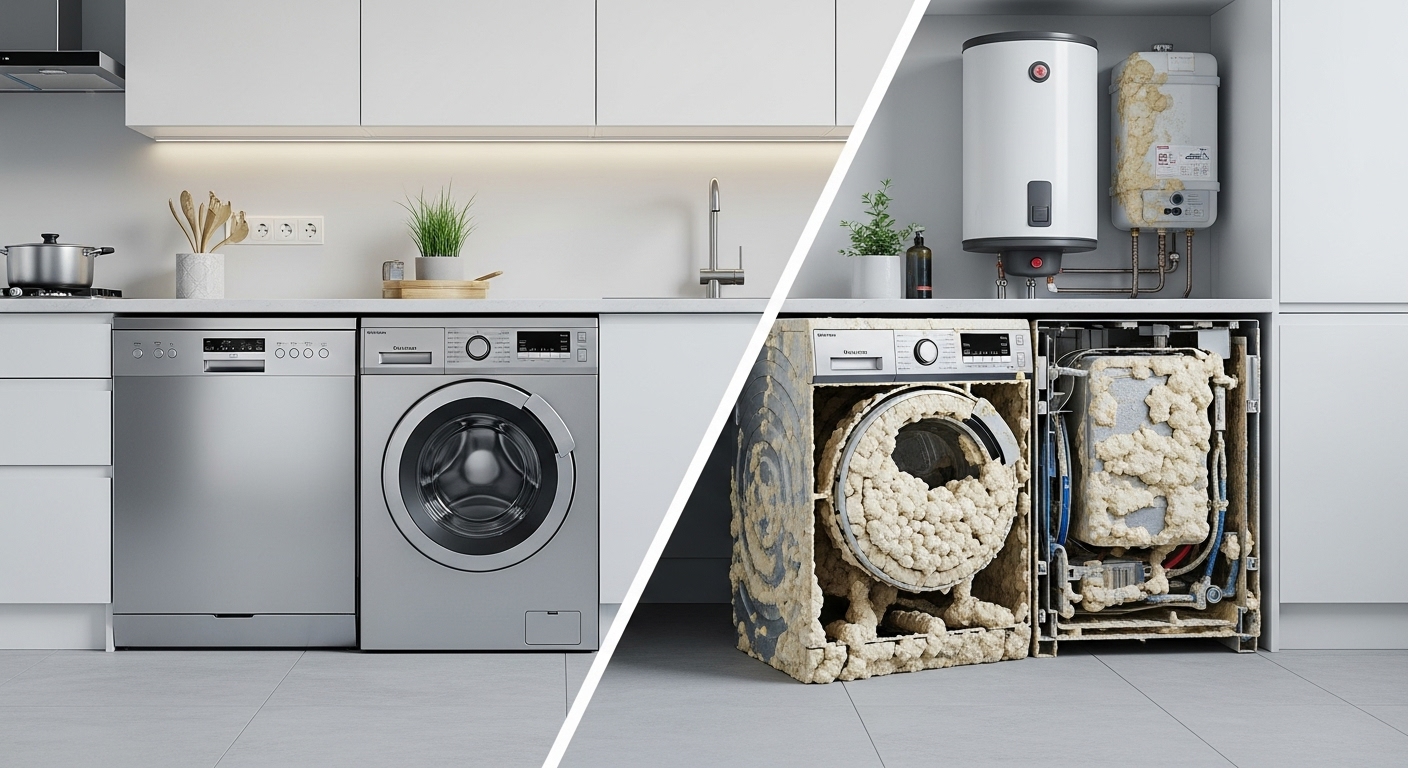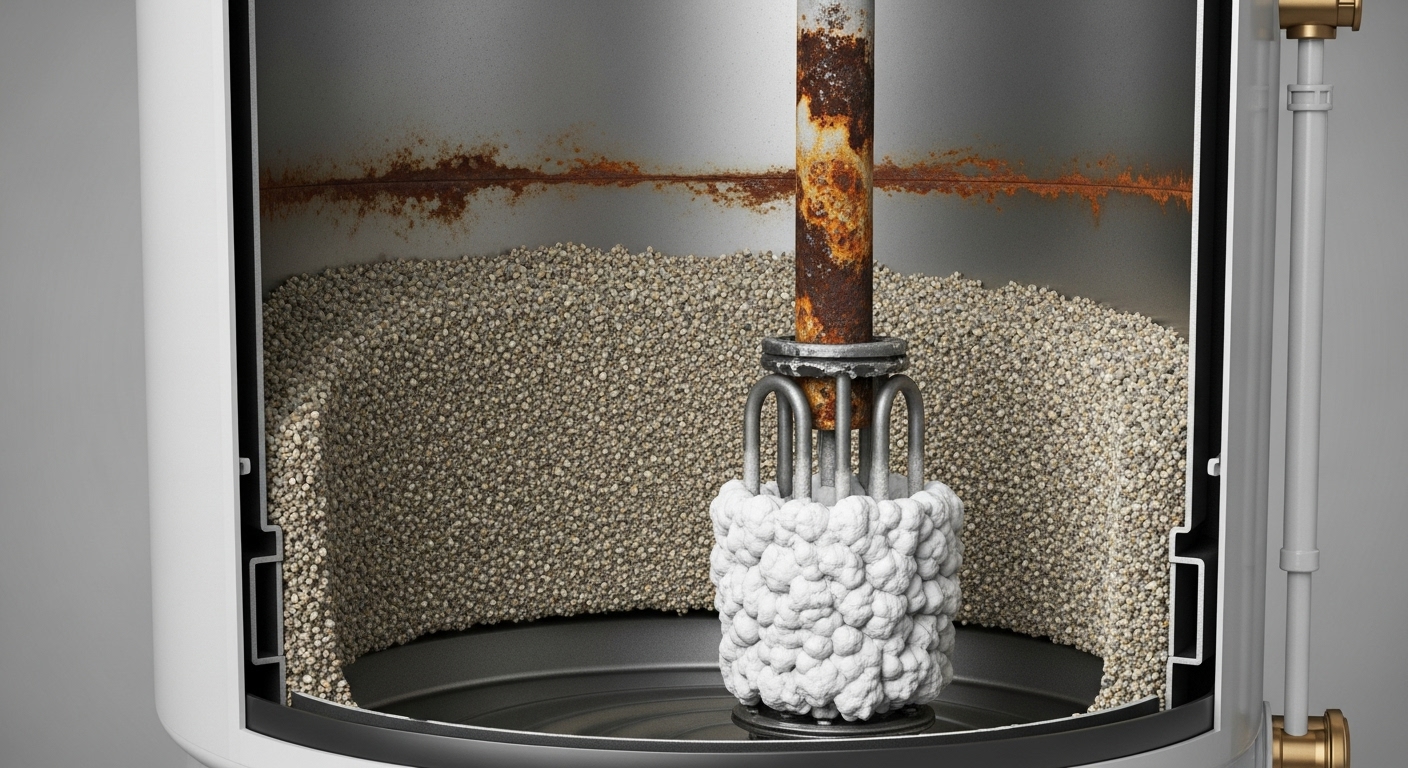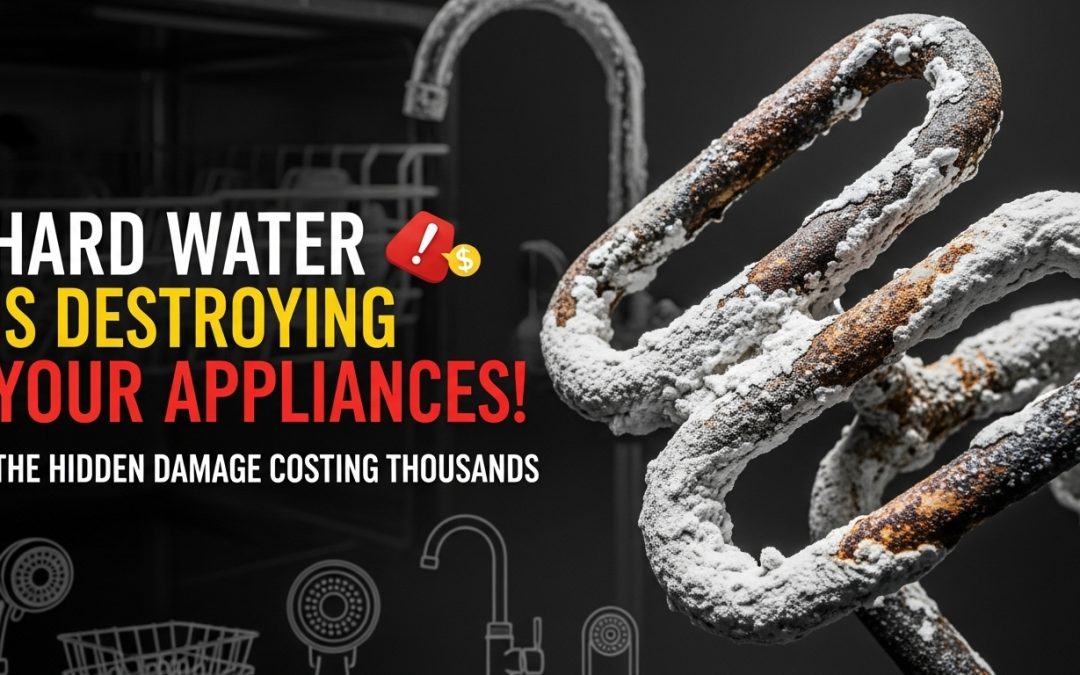How Maple Ridge’s Hard Water Destroys Appliance Components: The Hidden Damage Costing Homeowners Thousands in Premature Replacements
Watching your dishwasher struggle with cloudy glasses and wondering why your water heater keeps failing despite regular maintenance? You might be witnessing the silent but devastating effects of hard water systematically destroying your most expensive household appliances.
Listen, I thought I was being super smart when I moved into my first place and started researching all the ways to make my appliances last longer. I read every manual, followed maintenance schedules religiously, and even bought those fancy cleaning tablets. But nobody warned me about the invisible mineral army marching through my pipes, quietly building up inside my dishwasher’s spray arms and coating my water heater’s heating elements like concrete. Three years in, my “practically new” washing machine started making weird grinding noises, my dishwasher left everything covered in white spots, and my water heater was guzzling electricity like it was going out of style.

Here’s the thing about hard water damage – it’s not dramatic. There’s no sudden catastrophic failure that makes you go “aha, that’s the problem!” Instead, it’s this sneaky, gradual process where your appliances just start sucking at their jobs. Your clothes come out stiff, your dishes stay grimy, and your energy bills creep higher each month. By the time you realize what’s happening, you’re looking at thousands in premature replacements because the mineral buildup has basically turned your appliance internals into limestone caves.
What makes this particularly brutal for homeowners is that most people have no idea their water hardness is slowly bankrupting them. Even in areas like Maple Ridge, where municipal water is relatively soft, surrounding regions deal with significantly harder water that can cut appliance lifespans in half. Your dishwasher that should cruise along for 10 years might tap out at 7. Your water heater rated for 13 years could demand replacement at 6.5 years, hitting you with an unexpected $1,300+ expense when you’re least prepared for it.
Key Outtakes:
- Hard water reduces major appliance lifespans by 30-50%, with water heaters dropping from 13 years to just 6.5 years and washing machines lasting 7.7 years instead of 11
- Scale buildup forces appliances to work up to 40% harder, increasing energy costs and creating a hidden monthly drain on your budget
- Many appliance warranties become void when manufacturers discover “scale buildup due to water quality,” leaving homeowners without coverage during failures
- Hard water scale creates biofilm environments that can harbor dangerous bacteria like Legionella, adding health risks to the financial damage
- Water softeners typically pay for themselves within 2-4 years through energy savings and extended appliance life, potentially saving $8,000+ over a decade

Understanding Hard Water and Its Destructive Chemistry
Before we dive into the specific ways hard water murders your appliances, let’s talk about what this stuff actually is and why it’s such a problem. Hard water isn’t some rare, exotic phenomenon – it’s literally just regular water that’s picked up extra minerals as it travels through the ground. When water passes through limestone, chalk, or gypsum deposits, it dissolves calcium and magnesium ions, turning into what water treatment pros call “hard water.”
The measurement that matters for your appliances is “grains per gallon” or GPG. Anything over 7 GPG is considered hard water, and that’s where your problems begin. To put this in perspective, some areas deal with water measuring 15-25+ GPG, which is basically liquid rock at that point. Maple Ridge sits pretty at just 0.2 GPG thanks to its protected watershed supply, but travel to places like Merritt and you’re looking at 14.2 GPG – that’s hard enough to cause serious appliance damage.
Here’s where the chemistry gets nasty: when hard water heats up inside your appliances, those dissolved minerals undergo a phase change. They precipitate out of solution and form calcium carbonate deposits – basically limestone – directly on your heating elements, pump mechanisms, and internal surfaces. This scale isn’t just an inconvenience; it’s rock-hard mineral buildup that acts like insulation, forcing your appliances to work exponentially harder to achieve the same results.
The scale formation process accelerates with heat, which is why your water heater gets hit the hardest. Every time it cycles on to maintain your desired temperature, more minerals crystallize and add to the growing limestone coating on the heating element. Even a quarter-inch of scale buildup can increase energy consumption by up to 40%, turning what should be an efficient appliance into an energy-guzzling monster.

What’s particularly frustrating is that this hard water is completely safe to drink – the minerals causing all this appliance chaos pose zero health risks to humans. But those same harmless minerals turn into appliance-killing deposits the moment they encounter heat, pressure, or the chemical reactions happening inside dishwashers and washing machines.
How Different Appliances Suffer and Fail
Not all appliances handle hard water equally, and understanding the specific failure patterns helps you recognize the warning signs before you’re stuck with emergency replacements. Let’s break down exactly how this mineral mayhem affects each major appliance category and what you can expect in terms of shortened lifespans and increased costs.
Water Heaters Take the Biggest Hit
Your water heater is basically ground zero for hard water destruction because it combines the two things that accelerate scale formation: high temperatures and constant water contact. According to Water Quality Association research, electric water heaters in hard water areas last just 6.5 years compared to 13 years in soft water conditions – that’s a brutal 50% reduction in lifespan. Gas water heaters fare slightly better but still drop from 11 years to 5.5 years.

The damage happens from the bottom up. As your water heater cycles through heating and cooling, dissolved minerals sink to the tank bottom and form an increasingly thick sediment layer directly on the heating element. This sediment acts like a concrete blanket, forcing the element to work dramatically harder to heat water through the mineral barrier. The result? Your energy bills spike as efficiency plummets, and the overworked heating element burns out years earlier than designed.
But the problems extend beyond just the heating element. Hard water also accelerates corrosion of the anode rod – that sacrificial metal component designed to protect your tank from rust. In soft water, an anode rod might last 3-5 years. In hard water, it can corrode completely within 18 months, leaving your tank vulnerable to rust-through and catastrophic leaks.
The most expensive failure mode is tank rupture, where the combination of mineral buildup and accelerated corrosion creates weak spots that eventually give way. When a water heater tank fails, you’re not just looking at replacement costs – you’re potentially dealing with flood damage, emergency plumbing calls, and all the chaos that comes with 40-60 gallons of water suddenly appearing where it shouldn’t be.
Dishwashers and the Spotty Dish Disaster
Dishwashers might seem less vulnerable than water heaters, but hard water creates a perfect storm of problems that systematically destroy cleaning performance and internal components. The lifespan drops from a typical 10 years down to just 7 years in hard water conditions, but the decline in performance starts much earlier than total failure.
The most visible problem is what happens to your dishes and glassware. Hard water minerals react with dishwasher detergent to create insoluble films that leave everything cloudy and spotted. Over time, these mineral deposits actually etch the glass permanently, creating a dull, frosted appearance that no amount of cleaning can reverse. This permanent etching starts subtle but becomes increasingly obvious over months and years.
Internally, scale buildup clogs the spray arms that distribute water throughout the cleaning chamber. These narrow jets become increasingly restricted, reducing water pressure and creating uneven cleaning patterns. The heating element that handles the drying cycle gets coated with scale, making it work harder and consume more electricity while producing worse results.


Recent Comments